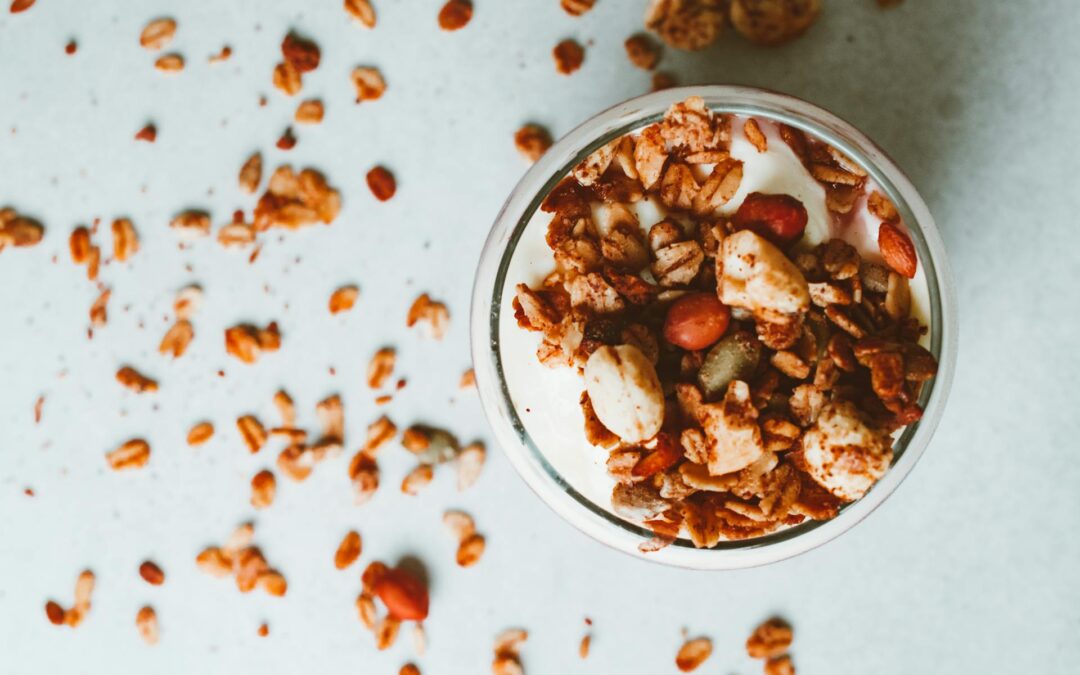By 2025, the weight-loss conversation will have shifted dramatically. In the early 2020s, low-carb diets like keto were king, but now the buzz is around injectable medications like Ozempic. Google searches for “Ozempic” have even surpassed those for “keto”. Once an obscure diabetes drug, Ozempic (semaglutide) now suppresses appetite so effectively that GLP-1 receptor agonists “have transformed the weight-loss medication market” – their popularity has soared.
This article explores what that means for weight loss in 2025. We’ll explain how Ozempic works in the body, compare it with low-carb approaches, and highlight the latest research on Ozempic weight loss. Along the way, you’ll get practical diet tips, safety considerations, and clear answers to common questions. Let’s dive in and make sense of these new weight-loss trends together.
What Is Semaglutide (Ozempic)?
Ozempic is delivered by weekly injection (pen shown) to complement a healthy diet. Ozempic is the brand name for semaglutide, a GLP-1 receptor agonist. GLP-1 is a hormone released after meals that helps regulate appetite and blood sugar.
Semaglutide mimics GLP-1: it slows digestion and signals fullness to the brain. Originally FDA-approved for type 2 diabetes, Ozempic quickly became popular for weight management. A higher-dose semaglutide (Wegovy) was approved in 2021 for chronic weight loss, sparking the Ozempic craze. (1, 2, 3, 4)
- How it’s given: Ozempic is injected once weekly under the skin. There is also an oral version of semaglutide (Rybelsus) for diabetes, which may soon gain a weight-loss indication. This means in the future, you might see Ozempic-like effects from a pill as well. (5)
- Who uses it: Millions of people now use GLP-1 therapies. One analysis estimated 8–20 million Americans were on GLP-1 drugs by 2024, with many more likely in the next few years. Demand has exploded, partly driven by celebrity success stories and social media buzz about Ozempic weight loss.
- Popularity: GLP-1 drugs “have transformed the weight-loss medication market,” and in recent years, “their popularity has soared”. Semaglutide injections like Ozempic and Wegovy have become household names in the weight-loss world.
Because Ozempic so strongly cuts hunger, it’s often discussed alongside diet trends. Many experts note that the best results happen when the drug is paired with healthy lifestyle changes, rather than relying on Ozempic alone. In other words, combining Ozempic with a balanced diet and exercise plan is the key to long-term success. (6)
How Ozempic (Semaglutide) Facilitates Weight Loss
Ozempic mimics GLP-1 to reduce hunger and slow down digestion. It delays stomach emptying so food stays in your gut longer, naturally cutting portion sizes. It also signals fullness to the brain, which lowers cravings and snacking. In clinical use, these effects add up: on average, people lose about 6–10% of their body weight on Ozempic. For example, one real-world analysis reported an average loss of 13–15 pounds (roughly 6–7% of starting weight) over 10 months of treatment. Some patients lose more, especially with higher doses or newer drugs in this class. (7, 8)
Key benefits:
- Lowered appetite: Many users report feeling satisfied sooner, making it easier to stick to healthy portions. You may not even think about grazing between meals.
- Metabolic gains: Ozempic improves blood sugar control and can lower blood pressure. In one 4-year cardiovascular outcomes trial, patients who maintained weight loss on semaglutide saw significantly fewer heart-related events. This means weight loss is just one of several metabolic bonuses. (9)
- Steady results: Weight loss on Ozempic tends to be gradual but consistent, often a pound or two per week initially. Many people maintain their loss while on the drug. (It’s important to note that studies show weight often returns if the medication is stopped, so a long-term plan is usually needed.)
In short, Ozempic weight loss is more reliable than most diets because it rewires hunger signals. However, it’s not magic – patients still need a sensible diet to reach peak benefits. Ozempic helps you eat less without feeling deprived, but if you replace your meals with junk food, progress will stall.
The Rise of Low-Carb Diets: Keto and Beyond
Avocado, eggs, and leafy greens are staples of many low-carb meals. Low-carb diets (like Atkins or the ketogenic diet) emphasize cutting grains, bread, and sugars, and boosting fats and proteins. In classic keto, about 70–80% of calories come from fat. This carbohydrate restriction forces the body into ketosis, burning fat for fuel. Many beginners experience a “keto flu” (headaches, fatigue, irritability) as the body adapts. However, once adapted, people often report steady energy and mental clarity – ketones (fat breakdown products) provide a consistent energy source for the brain.
Research shows both strict low-carb and more balanced diets can produce weight loss, just via different mechanisms. For instance, a large study found that cutting carbs or cutting fat yielded similar weight loss when calories were equal. The difference is how they get there. Keto diets often deliver rapid initial drops (partly from water weight) and naturally reduce appetite, while low-fat plans focus on filling you up with fruits, vegetables, and whole grains. Both methods work if you stick with them. Low-fat diets may have a cardiovascular edge long-term (they’re rich in fiber and lower in saturated fat), whereas very low-carb diets can risk nutrient gaps:
- For example, keto plans may lack fiber and vitamins, potentially leading to constipation or nutrient deficiencies without careful planning.
By 2025, keto is still a valid choice for many, but it’s no longer the only game in town. Surveys find that only about 4% of Americans fully followed a keto or similar very-low-carb diet in 2023, down from its peak popularity. Many nutrition experts now promote flexibility and whole foods over extreme rules. In practice, popular diet programs have shifted toward balanced macros and incorporating vegetables, even if they started as “low-carb.” In other words, a low-carb diet remains a tool, not a requirement, in the weight-loss toolbox. It’s simply one of many approaches that can work, depending on your preference and how Ozempic affects your appetite.
The Intersection: Ozempic and Low-Carb Diets
With Ozempic on the scene, many wonder: Should I still go keto or low-carb? The good news is, there’s no need for an extreme diet. Ozempic itself suppresses appetite so powerfully that people naturally eat smaller meals and often lose interest in sweets or carbs. At the same time, doctors note that Ozempic can make very greasy, high-fat foods hard to tolerate, heavy fried meals tend to stay in the stomach longer, and can trigger nausea.
Dietitians generally advise focusing on balance, regardless of medication. Emphasize lean proteins, whole grains, vegetables, and healthy fats, whether or not you follow keto. For example, a sensible Ozempic-friendly plate might be chicken, broccoli, and a bit of brown rice. Experts even say no foods are truly off-limits on Ozempic, as long as you prioritize fiber, protein, and healthy fats to feel full. (10)
Some people do choose a moderately lower-carb approach with Ozempic, especially early on, to double down on appetite control. Cutting out sugary snacks and refined carbs can complement Ozempic’s effect on blood sugar. But it’s not required; the main goal is simply to eliminate processed junk. Many on Ozempic find that even without a strict plan, their cravings diminish. In practice, what matters most is listening to your body’s new fullness signals and choosing nutritious, satiating foods – whether or not the diet is labeled “low-carb.”
Eating Smart on Ozempic: Nutrition Tips
While on Ozempic, think nutrient-dense over calorie-dense. Focus on:
- Lean proteins: Chicken, turkey, fish, eggs, Greek yogurt, tofu, or legumes. Protein fills you up and helps preserve muscle mass during weight loss. Aim for about 60+ grams per day (or more, if your doctor suggests it) to keep hunger at bay.
- Fiber-rich produce: Fill at least half your plate with vegetables (leafy greens, broccoli, peppers, etc.) and add fruits as snacks or desserts. These are low-calorie but high in fiber and water, so they bulk up meals without spikes in blood sugar. For example, berries, apples, or oranges are good fruit choices, and green salads or steamed veggies can add volume.
- Whole grains (in moderation): Opt for brown rice, quinoa, oatmeal, or 100% whole-grain bread instead of refined grains. These complex carbs release energy more slowly and keep blood sugar stable. You don’t need to cut all carbs on Ozempic – just make them whole-grain to get extra fiber.
- Healthy fats: Include small amounts of avocado, nuts, seeds, and olive oil in your meals. Unlike saturated or trans fats, unsaturated fats (like those in avocados or nuts) are heart-healthy and also promote satiety. Even a tablespoon of olive oil on your salad or a quarter portion of nuts can make meals more filling.
- Stay hydrated: Drink plenty of water throughout the day (8+ cups). Adequate hydration can prevent confusion between thirst and hunger. Sometimes we snack when thirsty. Also, starting a meal with a glass of water or broth can help you feel full faster.
At the same time, try to limit or avoid:
- Fried and greasy foods: Think fried chicken, burgers, fries, and heavy sauces. These tend to exacerbate Ozempic’s digestive effects (they linger in the stomach and often cause nausea). They also pack in a lot of calories for less nutrition.
- Sugary treats and drinks: Soda, juice, candy, and cakes. These offer quick sugar hits but little lasting fullness, and they spike blood sugar. Many people on Ozempic report that their cravings for sweets plummet on the drug, so it’s best not to test it by indulging frequently.
- Ultra-processed snacks: Chips, cookies, fast food, and similar items are typically high in salt, sugar, and trans fats. They provide calories without nutrients and can derail weight loss efforts.
- Oversized portions: With Ozempic, your stomach’s capacity feels smaller. Practice mindful eating: take smaller bites, chew well, and stop when you feel pleasantly satisfied, not stuffed. It can help to use smaller plates and bowls.
There’s no official “Ozempic diet,” but most doctors stress a balanced, whole-food approach. In practice, if your plate is full of lean protein, vegetables, healthy fats, and some whole grains, Ozempic will handle the appetite side. Combining that eating style with Ozempic’s appetite control is how you’ll maximize results, rather than relying on pills or diets alone.
Trends Shaping 2025: GLP-1s vs Traditional Diets
The weight-loss landscape in 2025 is dominated by GLP-1 drugs, and industry watchers are taking note. Major food companies are retooling products for Ozempic weight loss consumers. For example, Nestlé launched Vital Pursuit, a frozen-meal line high in protein and fiber designed specifically for people on Ozempic and Wegovy. Analysts now predict that by 2030, obesity medications will become roughly a $100 billion market, with up to 9% of Americans using a weight-loss drug.
Those forecasts are reflected in spending and surveys. One market report found U.S. weight-loss spending had more than doubled by 2024 (to about $33.8 billion), almost entirely due to GLP-1 demand. In consumer polls, roughly 26% of adults said they plan to try a GLP-1 drug like Ozempic in 2025 (37% of Gen Z). At the same time, 64% of people cited high cost and 59% cited side effects as their top concerns about these medications. (11, 12)
Food and diet brands are responding creatively. Research shows that a high-protein diet was the top choice among people committed to one diet in 2023. In response, many companies have launched high-protein, portion-controlled foods (bars, shakes, soups, entrees) tailored to GLP-1 users. Even legacy diet brands like Lean Cuisine have revamped offerings, and a wave of new “keto-friendly” products now emphasize extra protein and fiber.
Beyond packaged meals, companies are innovating. In 2025, Nestlé announced GLP–1–friendly Boost protein beverages – using a special whey-protein microgel – to help people on semaglutide feel full on the go. Clinical data showed these drinks significantly lower post-meal glucose spikes and boost satiety (by increasing natural GLP-1 release).
Meanwhile, pharmaceutical R&D is racing ahead. New drugs on the horizon promise even bigger weight losses. For example, Amgen’s CagriSema (a combo of semaglutide and cagrilintide) has produced nearly 23% weight loss in trials, far above what current drugs achieve. Other multi-hormone therapies (retatrutide, survodutide, etc.) are in development.
Oral GLP-1 pills are also coming: Rybelsus (oral semaglutide) is already approved for diabetes, and new oral analogs (like danuglipron and orforglipron) are in late-stage trials. Together, these trends show how the Ozempic weight loss revolution is driving innovation across food and pharma.
Keto and other low-carb diets remain options, but their hype has cooled. Interest in “Ozempic” has surpassed “keto” on Google. Many people who once tried keto are now considering GLP-1 injections instead.
The takeaway: low-carb is still on the menu, but in 2025, it’s just one strategy among many. Combining diet, exercise, and possibly GLP-1 therapy has become the multifaceted approach people use to lose weight.
Side Effects and Safety Considerations
While Ozempic can be a powerful weight-loss aid, it comes with potential side effects. Because semaglutide slows digestion, gastrointestinal (GI) symptoms are most common. Clinical data show that over 48% of users reported at least one side effect on Ozempic. The most frequent complaint is nausea (about 37% of patients). Other common issues include diarrhea (~9%) and constipation (~5%). These symptoms typically begin during the first few weeks of treatment and often improve as your body adjusts. (13)
To minimize discomfort, doctors recommend starting low and going slow. That means beginning with a small dose of Ozempic and increasing it gradually. Eating smaller, blander meals and avoiding very fatty or spicy foods can greatly reduce nausea. Drinking plenty of water and choosing easy-to-digest options (like broths, oatmeal, or cooked vegetables) also helps; experts note that bland foods and water are least likely to cause GI upset. Providers often pause dose increases until side effects subside, to help patients adapt.
Most people adapt to Ozempic over time, but consult your doctor if you have severe or persistent side effects. Rare but serious risks have been reported, such as pancreatitis (inflammation of the pancreas) or gallbladder problems from rapid weight loss. Ozempic also comes with a warning (from animal studies) about thyroid C-cell tumors, so it is not used in people with certain thyroid cancers or multiple endocrine neoplasia.
Other considerations: Don’t use Ozempic if you are pregnant or breastfeeding. It can cross the placenta and has caused growth issues in animal studies. Also, because Ozempic slows gastric emptying, it can affect how other medications are absorbed – always inform your doctor of all drugs and supplements you take. If you have diabetes or take other blood-glucose-lowering medications, be aware that Ozempic can increase the risk of low blood sugar, so monitor your levels closely.
On the positive side, many patients find that the side effects fade away with time. In surveys, about 86% of GLP-1 users said any side effects were worth it for the weight they lost. With common-sense eating, gradual dose changes, and medical guidance, most people feel that the benefits of Ozempic eventually outweigh the initial discomfort.
The Bottom Line
The mix of Ozempic weight loss and low-carb diets shows how weight management is evolving in 2025. GLP-1 therapies like Ozempic have revolutionized obesity care – they help people eat less and lose weight more easily. Yet nutritionists remind us that lasting success comes from whole foods and balance. In 2025, GLP-1 agonists will continue to reshape obesity treatment, but the fundamentals remain the same: nutritious eating and healthy habits.
Looking ahead, expect more innovation: oral semaglutide options, combination drugs, and specialty foods for GLP-1 users. But remember, no medication can replace a sensible lifestyle. Treat Ozempic weight loss as one tool under medical supervision, along with realistic goals and whole-food nutrition. With that balanced approach, you can ride the trends of 2025 toward sustainable weight loss and better health.
FAQ
Q: How exactly does Ozempic help me lose weight?
A: Ozempic is a GLP-1 agonist that mimics appetite-regulating hormones. It slows gastric emptying and signals fullness to your brain, so you naturally eat less. It also stabilizes blood sugar levels. This combination typically leads to steady weight loss (on average around 6–10% of body weight over a year, though individual results vary).
Q: What should I eat while taking Ozempic?
A: Focus on nutritious, high-protein, high-fiber foods. Good choices include lean proteins (chicken, fish, tofu), vegetables, fruits, whole grains, and healthy fats (avocado, nuts, olive oil). These foods help you feel full and minimize side effects. Limit fried, greasy, and sugary foods, which can worsen Ozempic’s GI effects. In practice, there’s no strict “Ozempic diet” – balanced, whole-food meals will best complement the medication.
Q: How much weight can I expect to lose on Ozempic?
A: Weight loss varies. Clinical studies found that the average Ozempic user lost about 13–15 pounds (6–7% of starting weight) in 10 months. Many people fall in the 5–10% range of body weight loss, especially with diet and exercise. Some people lose less, and some lose more (especially at higher doses). In general, expect gradual weight loss, and be patient – it often takes several months to see the full effect.
Q: Do I need to go keto or low-carb to make Ozempic work?
A: No. Ozempic works by reducing appetite, so you don’t have to follow a very low-carb diet unless you want to. Many experts recommend a moderate, balanced diet instead of extreme restriction. Focus on protein, fiber, and vegetables, and cut out empty-calorie foods. If you prefer low-carb for other reasons (like blood sugar control), that’s fine – it may even add to Ozempic’s effects – but it’s not required. The main goal is to eat nutritious meals that keep you satisfied.
Q: What’s the difference between Ozempic and Wegovy (or other weight-loss drugs)?
A: Ozempic and Wegovy are the same drug (semaglutide) at different doses. Ozempic (0.5–2 mg weekly) is FDA-approved for diabetes (used off-label by some for weight), while Wegovy (2.4 mg weekly) is approved specifically for obesity. Another popular medication, Mounjaro (tirzepatide), works on two hormones (GLP-1 and GIP) and has shown even greater weight loss in trials. Each of these activates your satiety hormones, but they differ in dosing and effects. Your doctor will help decide which is appropriate for you.
Q: What are the common side effects of Ozempic?
A: The most common side effects are gastrointestinal. Many users experience nausea, upset stomach, diarrhea, or constipation when they start Ozempic or increase the dose. These usually lessen over time or with slower dose increases. Some people feel tired or have mild headaches as their body adjusts. To minimize side effects, start with a low dose and eat bland meals. If you ever experience severe symptoms (like intense stomach pain), contact your doctor right away.
Q: If I stop Ozempic, will I gain the weight back?
A: In most cases, yes, weight tends to return if you stop the medication. Ozempic is often prescribed as a long-term treatment. To keep weight off after stopping, you’ll need to rely on diet and exercise habits. Think of Ozempic as jump-starting your weight loss; lasting change comes from sustainable lifestyle habits in the long run.







0 Comments